“Can you order for us? I don’t know what’s good.” This is the same thing I hear every time I go to a Thai restaurant with a friend, regardless of whether I’ve been to the place before or not. So I thought I’d make a tier list of common Thai dishes available in a typical North American Thai restaurant, ranked according to their likelihood of being satisfactory!
A tier list is simply a fun way of ranking items that’s been popular on YouTube. Now, to be clear, I’m not ranking Thai dishes based on how good they are, because that’s not possible. Every dish has the potential to be great and every dish has the potential to suck, just depends on who is making them.
So instead I’m ranking them based on something much more useful: their likelihood of being good at an average Thai restaurant in North America. So, if you walk into a random tie place in…say…Saskatchewan, which dishes are most likely going to be satisfactory, and which dishes are most likely going to disappoint according to my standard, which I think is on par with most Thai people.
My hope is that this list will help you maximize your chances of having a good Thai meal wherever you go!
Video: Watch Me Rank Thai Dishes!
If you prefer to watch and see my reaction, you can watch me rank all the dishes in this video! Or if you prefer to read, the info is all in this article below.
The Tiers
Let’s first define our tiers. Typically tier list goes in the order of S-A-B-C-D…. but what each one means can be individually defined, as I have done.
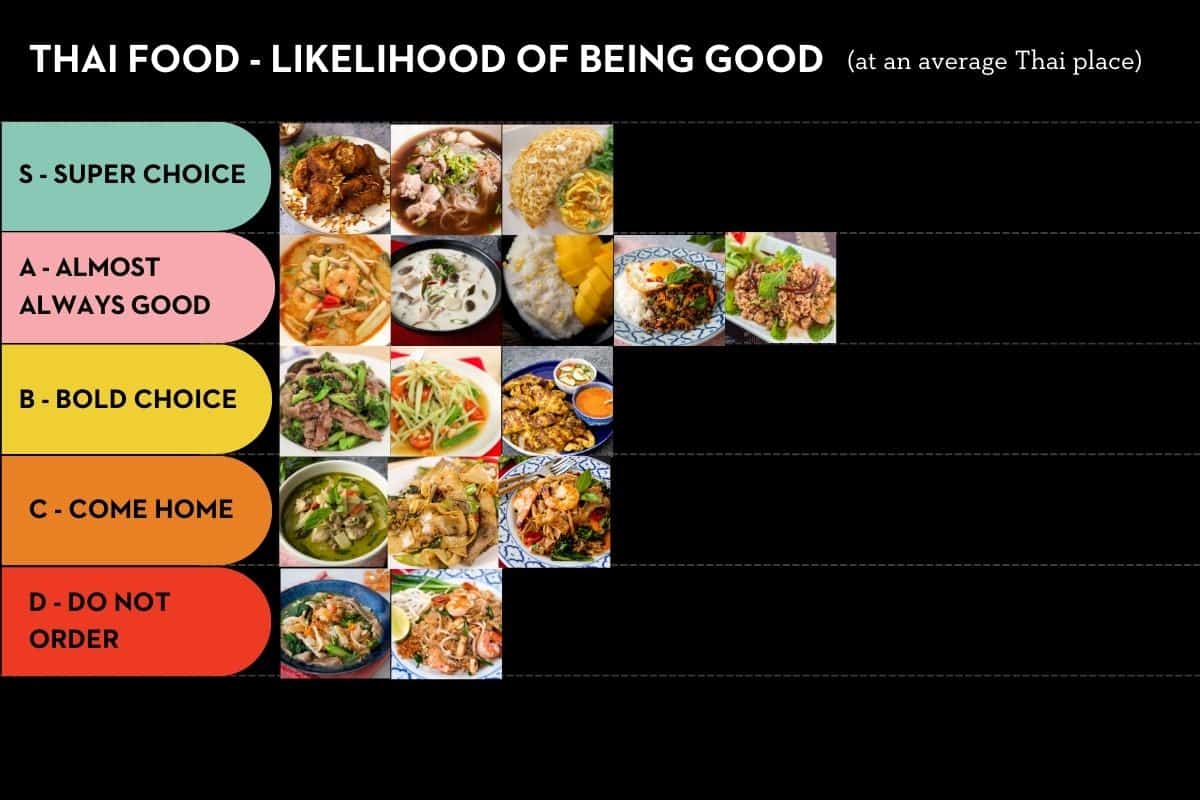
S tier – Super Choice. If I see these items on the menu I am going to order them because they’re unusual for a Thai restaurant to have them, they’re harder to prepare, requires a lot of prep, so if a restaurant decides to commit to one of these, it probably means someone in there is committed and skilled. So it’s probably a good dish to try.
A tier – Almost Always Good. These are dishes that are easy to execute well, so you’ve got a good 70% to 80% chance of it being satisfactory.
B tier – Bold Choice. Maybe it’s good, maybe it’s not, you’re definitely taking a risk on that one.
C tier – Come Home. Come home and make it yourself! Now these are not necessarily worse than a B tier but they’re so easy to make well that you probably do a better job of it at home.
D tier – Do Not Order! These are almost always going to be disappointing, and unless you know otherwise don’t even go there.
Caveat
Before I rank I just want to be clear that of course there are excellent Thai places that make good everything, especially this new wave of hip, fine dining, and artisanal Thai restaurants. We’re not talking about those for this ranking. I am talking about your cheap and cheerful Tuesday night takeout places, I think you know what I mean!
Also, this ranking is based on my standards and experience, which may be different from yours 😉
Curries get a “come home” because they are so easy to make! The ingredients are very easy to find, and IF you’re using a good brand of store-bought curry paste (and I have a post all about that) you’re almost guaranteed a good result.
When you’re at a restaurant, it’s a B. A lot of times they make it too mild because curries can’t be made to order. A restaurant has to make the curry sauce all at once in a big batch so they can’t make it any spicier than they think most people can handle. And the thing with curries is if you use if you make it less spicy, you’re automatically making it less flavorful because the spiciness is tied with all the herbs and spices in the curry paste.
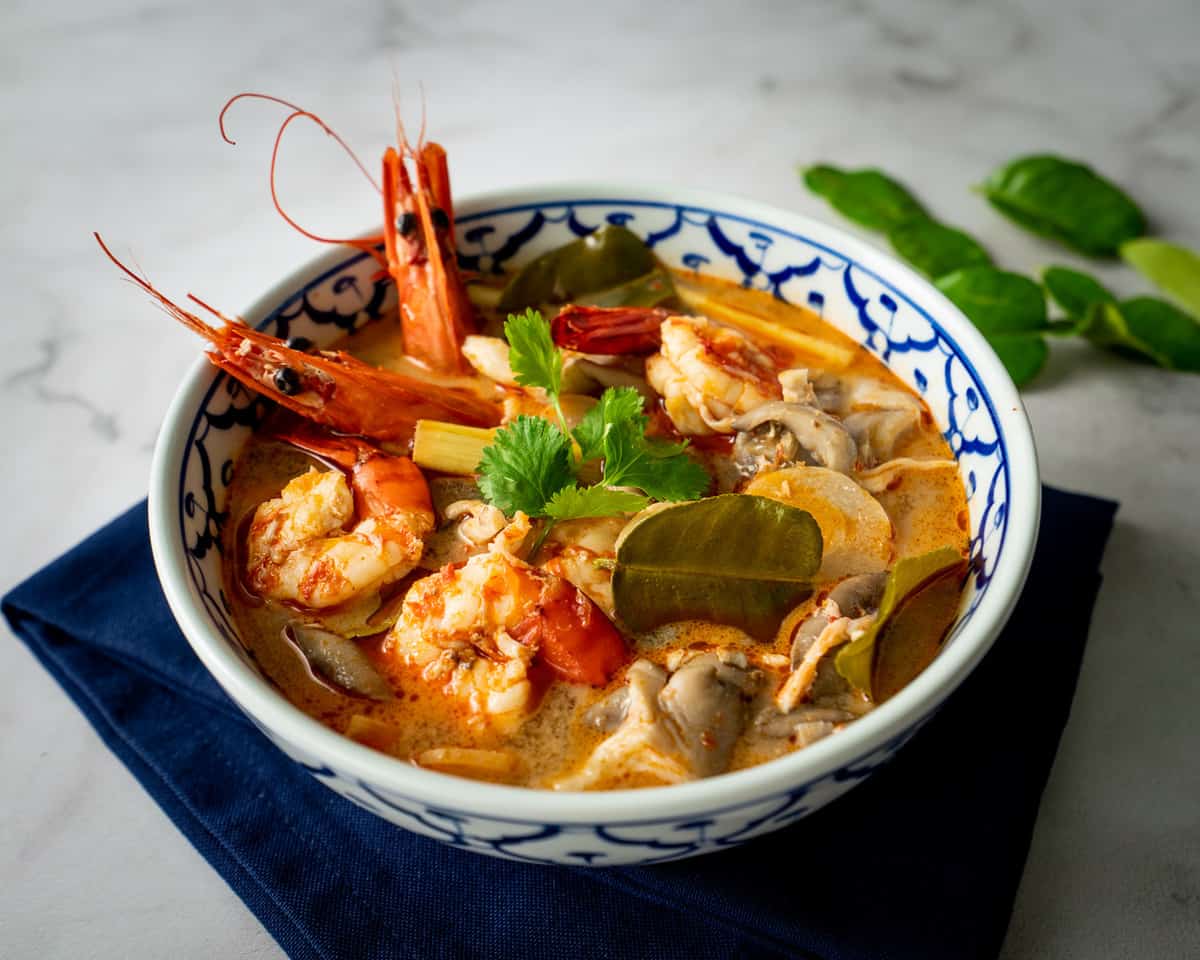

A spicy and sour soup with lemongrass, galangal, lime leaves usually with shrimp (tom yum goong) but most restaurants will also have like a chicken version (tom yam gai). It’s an A-tier because it is so easy to do well and most restaurants do a decent job of it. It might not blow your mind, but it will at the very least be pleasant.
3. Meat & Veggie Stir Fries – B Tier
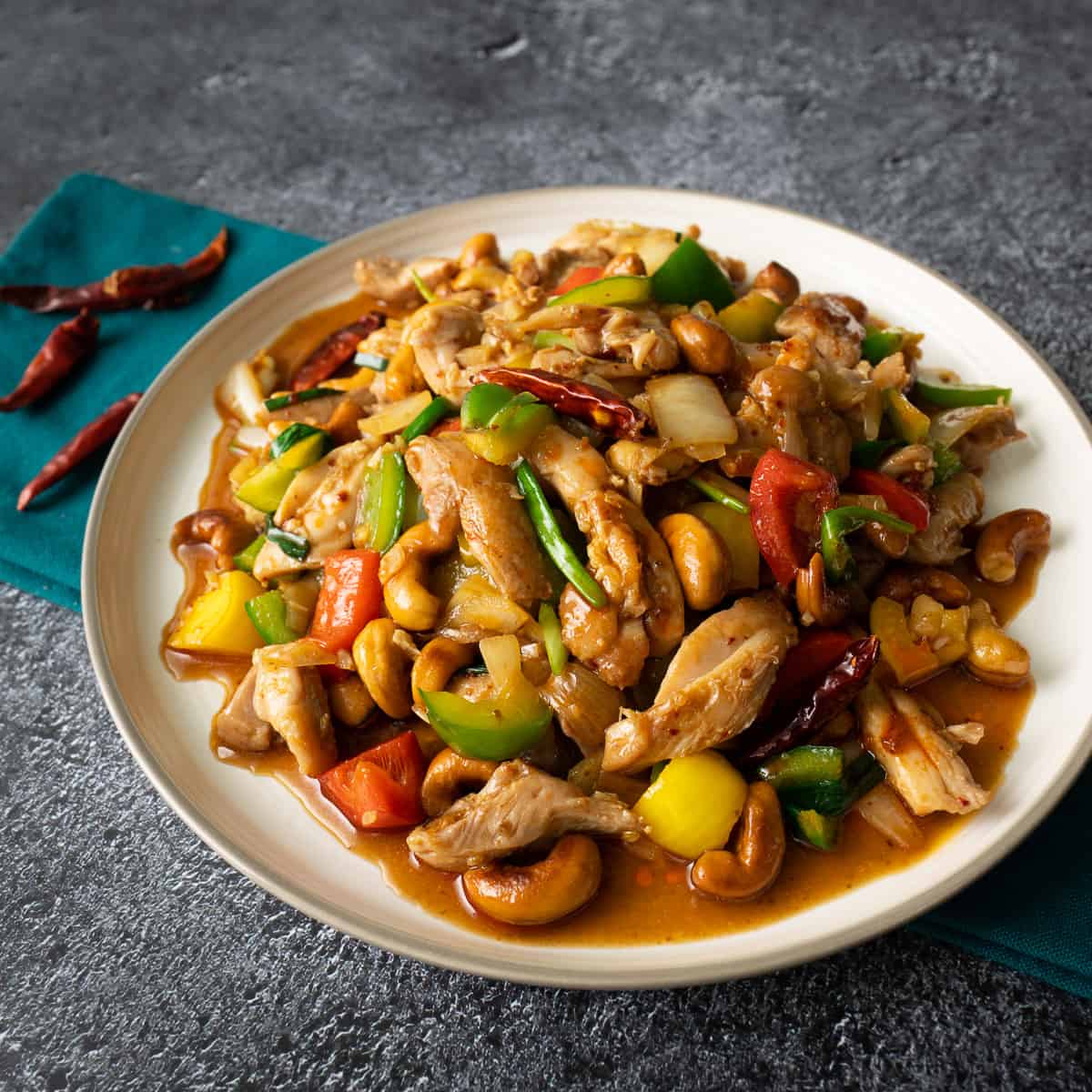

This is not a specific dish but a category of dishes. Thai restaurants will have a bunch of these – some combination of meat and vegetables stir fried in some type of brown sauce or slightly red sauce. It could be beef and broccoli, cashew chicken, sweet and sour stir fry, or a chicken ginger stir fry.
These are bold choices. Sometimes it’s really good and sometimes it’s just some dry chicken with chunky broccoli with a sauce that doesn’t really do anything for you.
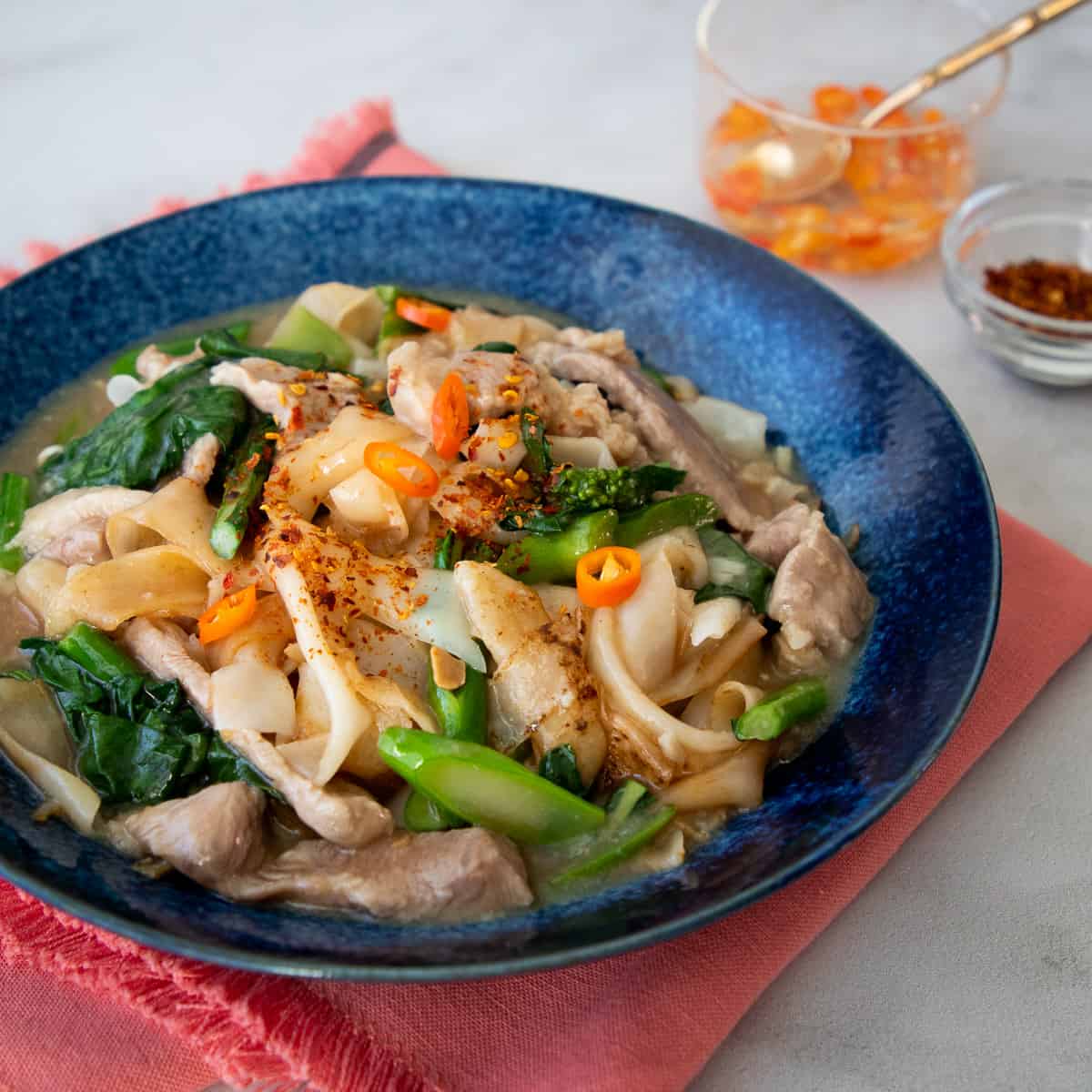

Rad na is one of the most underrated noodle dishes. It is made with wide rice noodles with a gravy on top, but I think the reason it is underrated is because it is so hard to do well. This is why in Thailand most places that make rad na are specialists.
So most of the time when you order rad na in a non-specialist Thai restaurant here, it is always disappointing. It has simple flavors, which means you have to have good ingredients, the ratios have to be right, the consistency of the gravy has to be right…a lot to ask of a restaurant who doesn’t specialize in it.
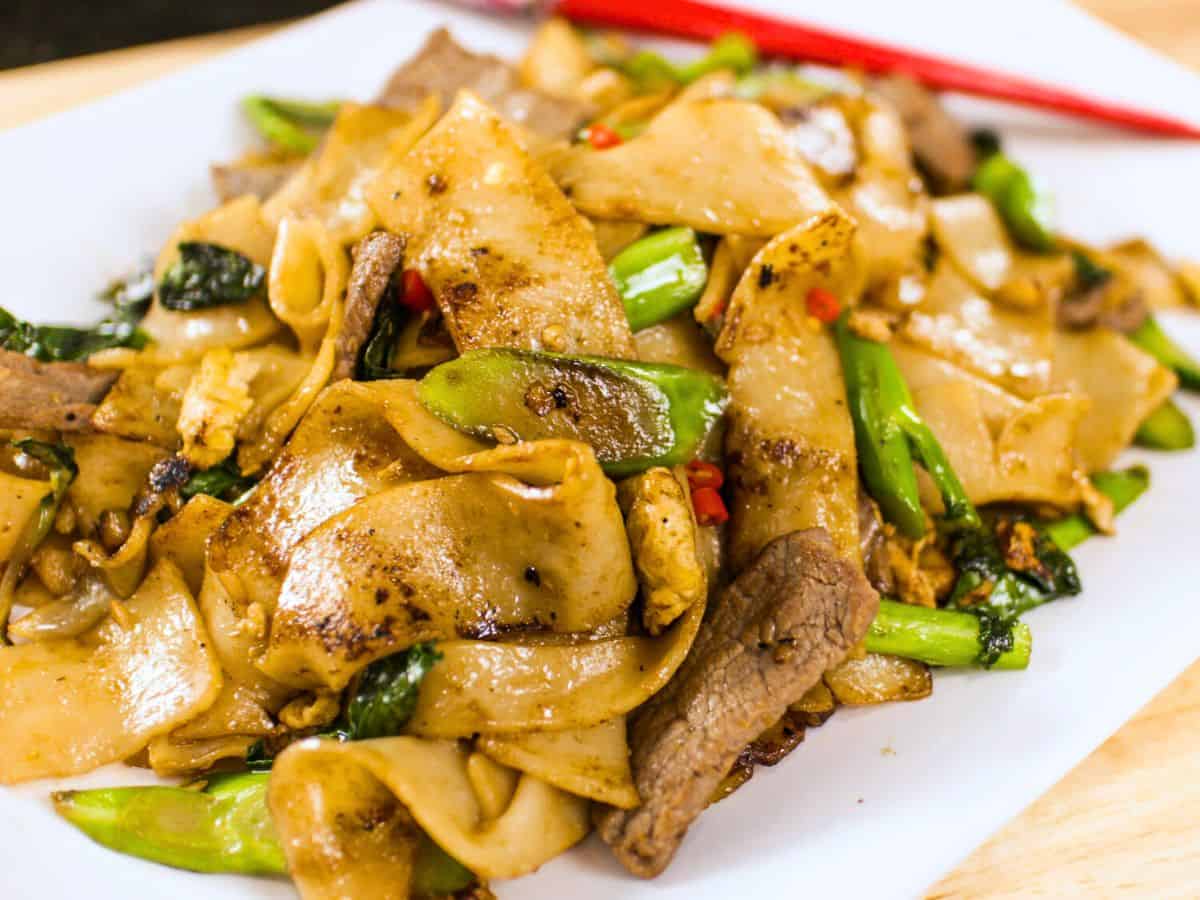

Pad see ew is a cult favorite. People who love it are so passionate about it and I’m definitely one of them. If done well it is so good, however at a restaurant it’s kind of a toss up, so a B-Tier. Sometimes it’s so sweet, sometimes the noodles are mushy, sometimes it’s not even the right noodles, or they put carrots and all sorts of weird things in there. But sometimes it’s great! You just you just never know with this one.
However, if you can get the fresh rice noodles, it’s definitely a C-Tier. Come home and make it using my recipe. I don’t know about anyone else’s recipes, but I’ve heard from countless number of people who say that my recipe is better than any restaurant version they’d had. Even my brother makes my recipe constantly. It’s very easy to make with a simple ingredient list!
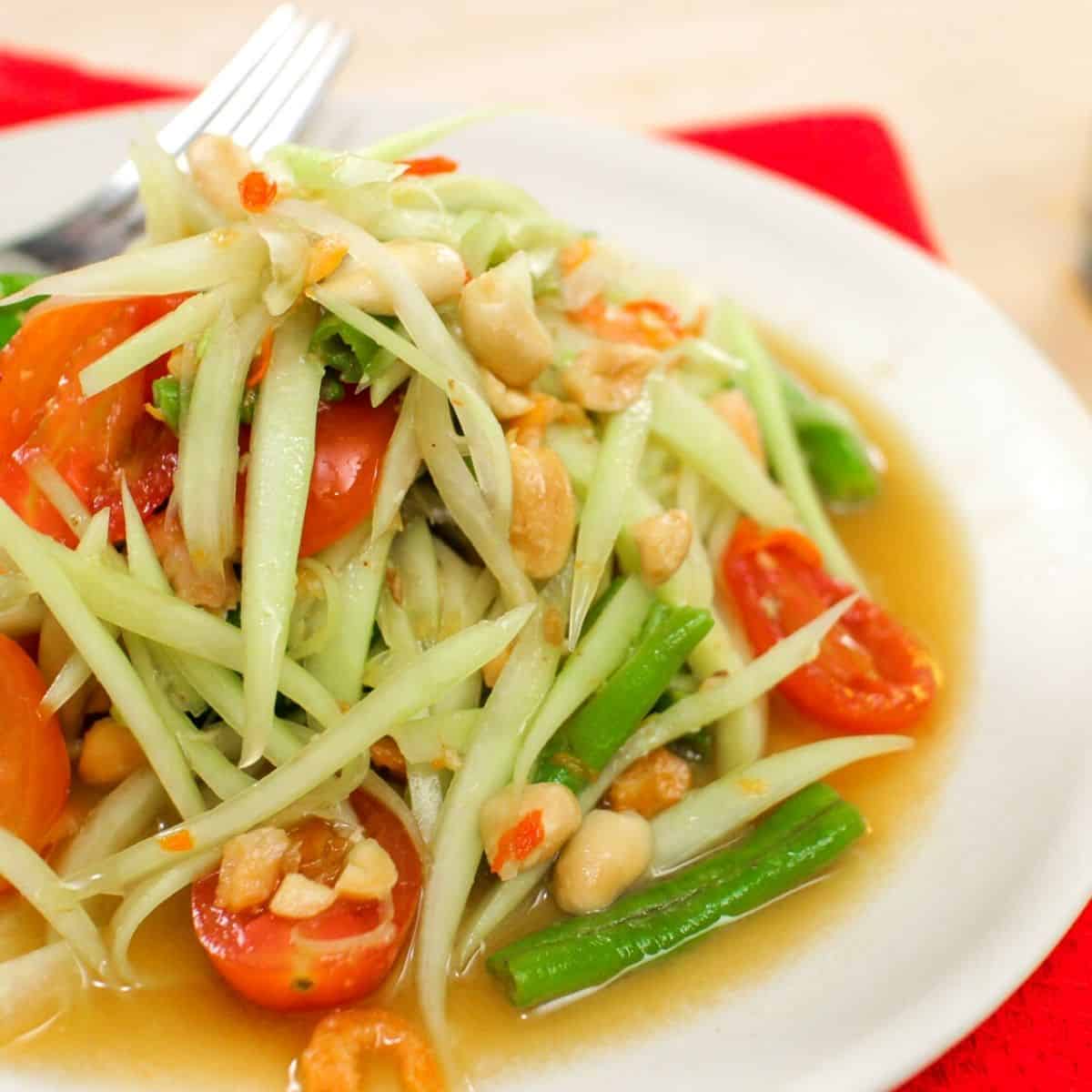

I debated whether this should be an A or a B, but I think I’m going with B because though it’s not hard to make a good papaya salad, it often misses the mark for a Thai person’s taste. A good papaya salad for a Thai person needs to be strongly flavoured. Sour, salty, spicy…everything has to come at you strong.
But a lot of times in your average Thai place they make it quite mild, as though it’s a side salad. It might be enjoyable, but it’s definitely not having the effect that it should.
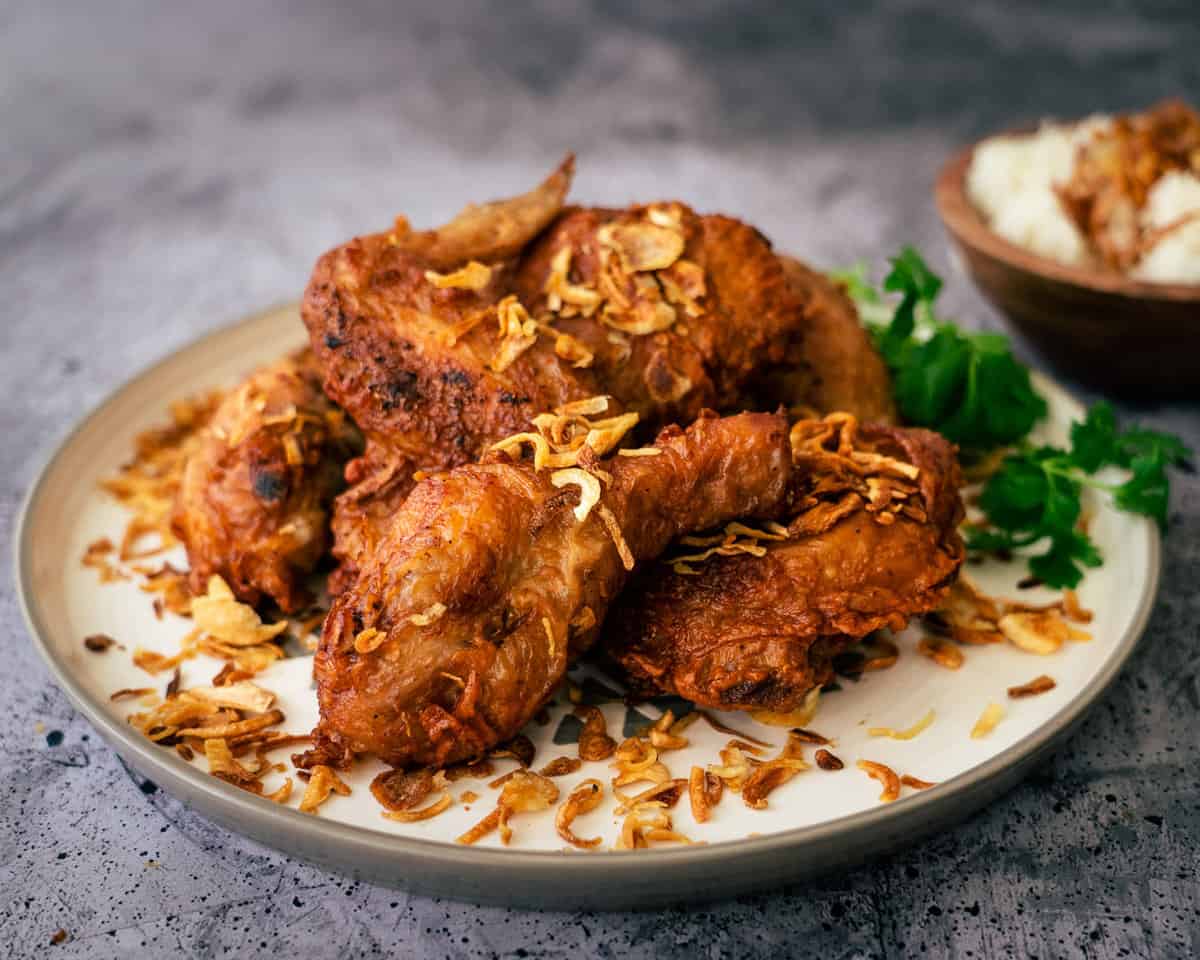

Hat Yai Fried Chicken is marinated in this wonderful mixture of soy sauce, garlic, and white pepper with a light crisp coating. It is served with fried shallots and sticky rice. It is one of the best fried chicken in the world in my opinion and if a restaurant does choose to have it, they probably do a good job. I have yet to be disappointed by it.
Note that it might not be called Hat Yai Fried Chicken on the menu, it might just be called Thai fried chicken or simply fried chicken. But I think in general if you see fried chicken in a Thai restaurant, it’s probably a solid choice.
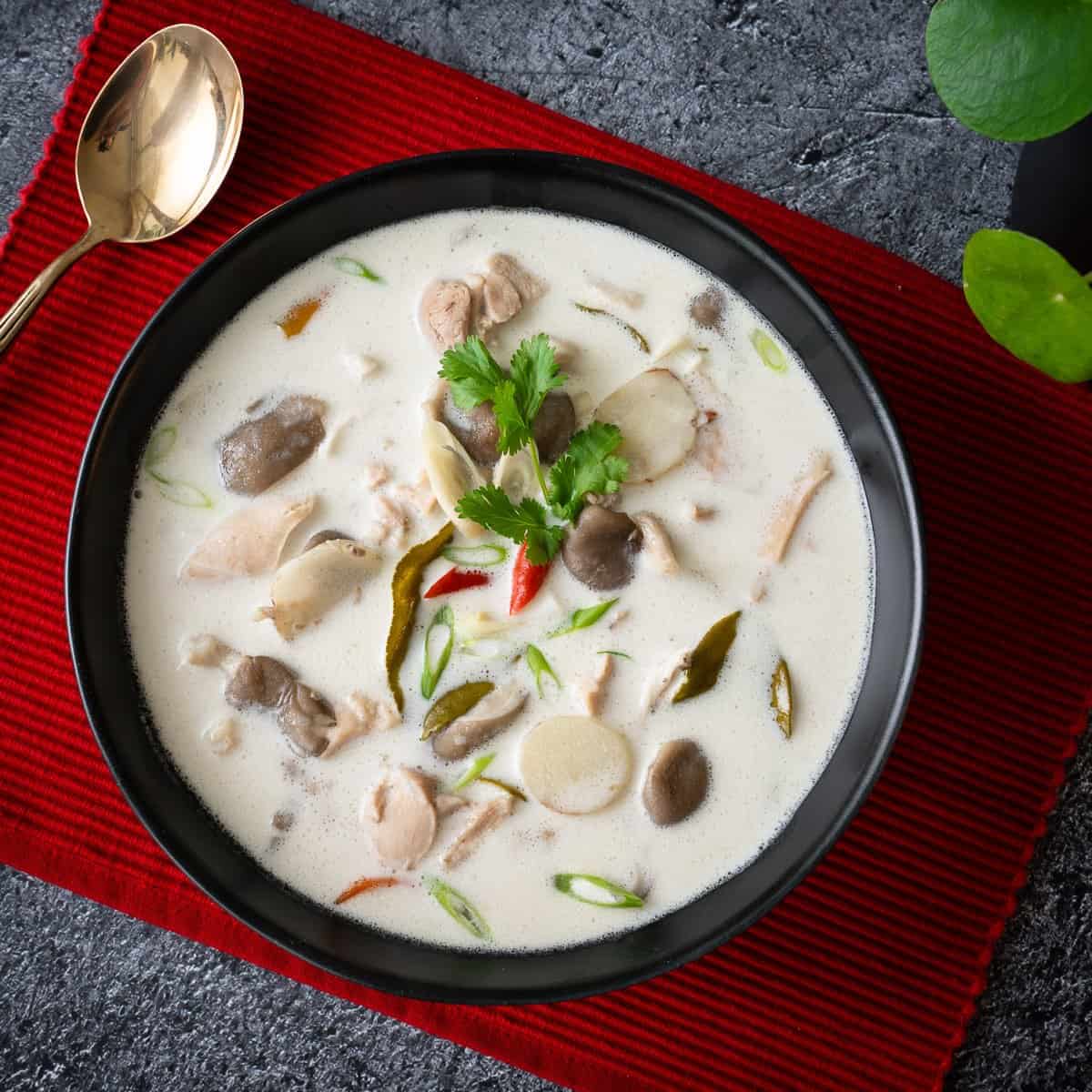

Tom kha gai is a popular soup made with coconut milk, chicken and gangal. It is wonderfully delicious and soothing, and not too spicy. It’s very easy to make, with flavours that loved by most people, and most restaurants do a decent job of it. If it doesn’t blow your mind it will at least be a pleasant experience.
It’s a great soup to order if you love to have something to sip on alongside your meal!


Pad kee mao or “drunken noodles” is the spicy sister of pad see ew. It’s a spicy wok fried fresh wide rice noodles with holy basil. I would put it on the same tier as pad see ew, and that is C – come home and make it if you can get the ingredients, but if you’re in a restaurant it’s a B.
In a restaurant you just never really know what you’ll get, but just like pad see ew, it’s easy to make and I have a solid recipe that, if you follow it, it is guaranteed to satisfy.


Boat noodles, if you’ve not heard of it, it’s because it’s not a very common dish. So the places that do make it usually do a very good job of it. It is a kind of noodle soup with a rich aromatic broth full of spices. It’s thickened with blood and has an intense, complex flavour, which is why we often have only small bowls of it at a time.
When done well, it is one of the best things you can eat. Someone once described it as “pho on steroids” which I think is quite accurate!
But it it requires a ton of prep. The ingredient list is long, as you can see in my boat noodles recipe here. So a restaurant who chooses to make has to be committed. Now, I have seen ONE not-great boat noodles before but I think that was an anomaly, most of the time I’d say it is a solid S-tier.
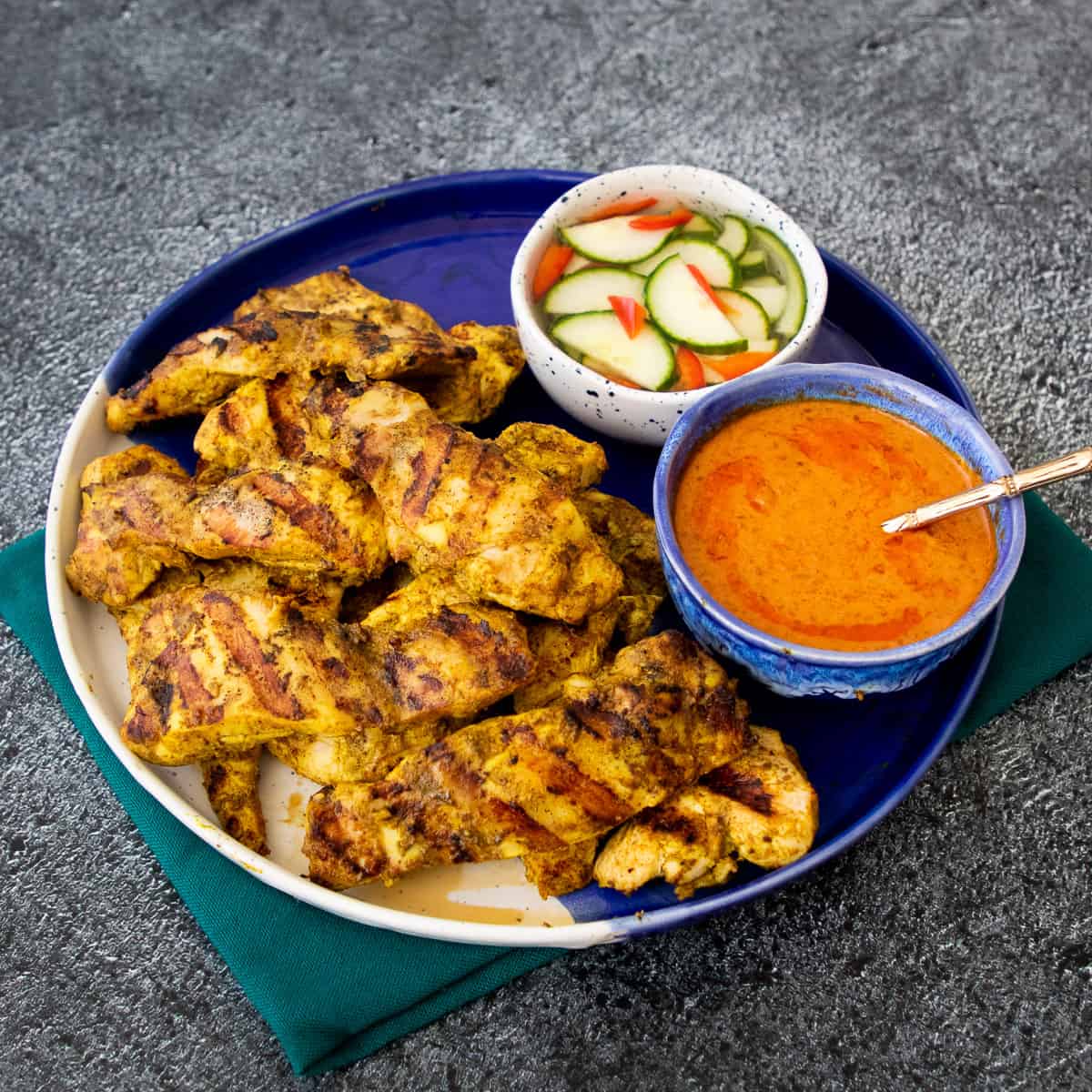

Most of the time chicken satay is going to be fine, but for a Thai person this is a B. The chicken itself is usually tasty, but it’s the sauce that’s the issue. Half the time you get a sauce that’s made from goopy peanut butter, and that is not what a Thai satay sauce should be. It should be made with ground roasted peanuts, with TEXTURE, so for Thai person, a smooth peanut buttery sauce completely ruins a satay.
As a side note, chicken satay is not very common at all in Thailand. You only find it in places that serve a lot of tourists and in Muslim communities. But the vast majority of satay that Thai people eat is pork satay. And I guess that’s the first disappointment for a Thai person…it’s not pork!
12. Yum Pladuk Foo (Crispy Fluffy Fish with Green Mango Salad) – S Tier
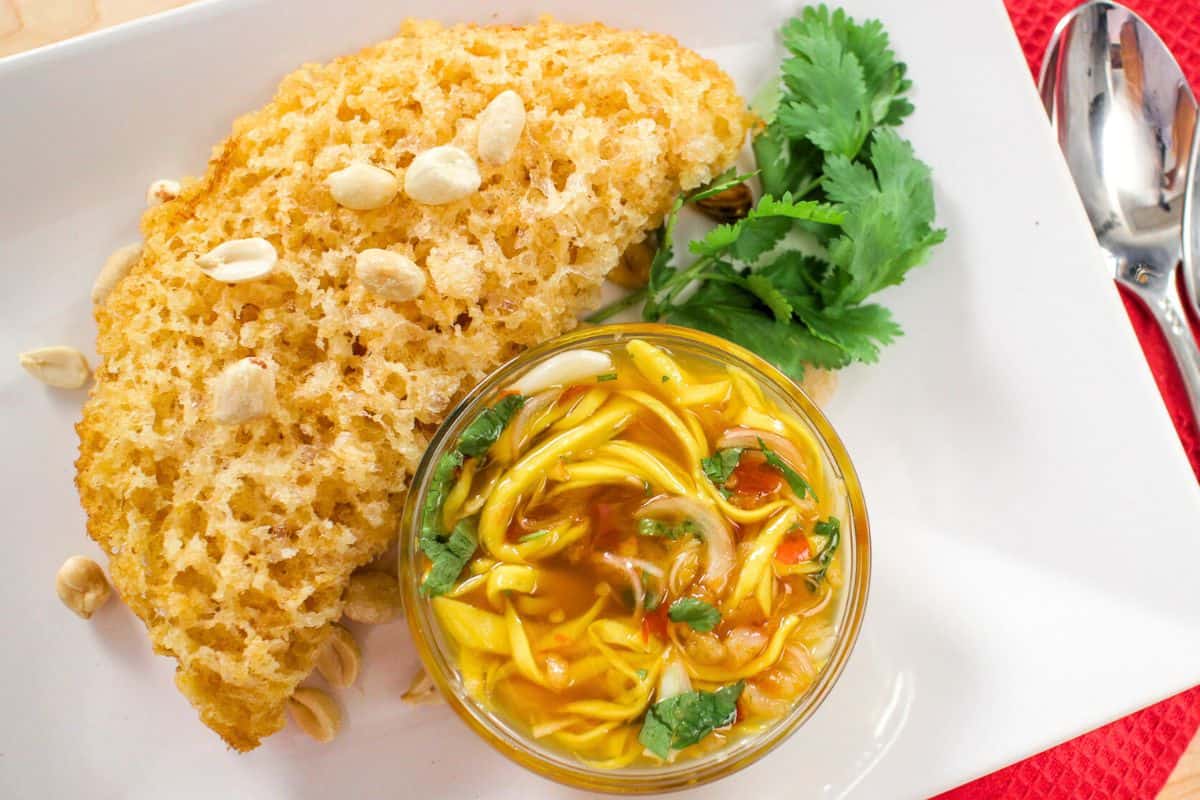

It’s a truly unique dish, and you gotta check out the video of how it’s made if you’ve never seen it, and you can’t imagine how fish can be “crispy and fluffy”. The fish gets pounded into shreds, and the shreds are deep fried. The result is a raft of crispy fish bits that is then served with a sour green mango salad. It is TO. DIE. FOR.
The crispy fish is not easy to pull off. It does require work and skills, which is why if a restaurant has it, chances are there is someone skillful in the kitchen and it’ll probably be great. And once you can successfully make the fish, the rest is really easy to make tasty.
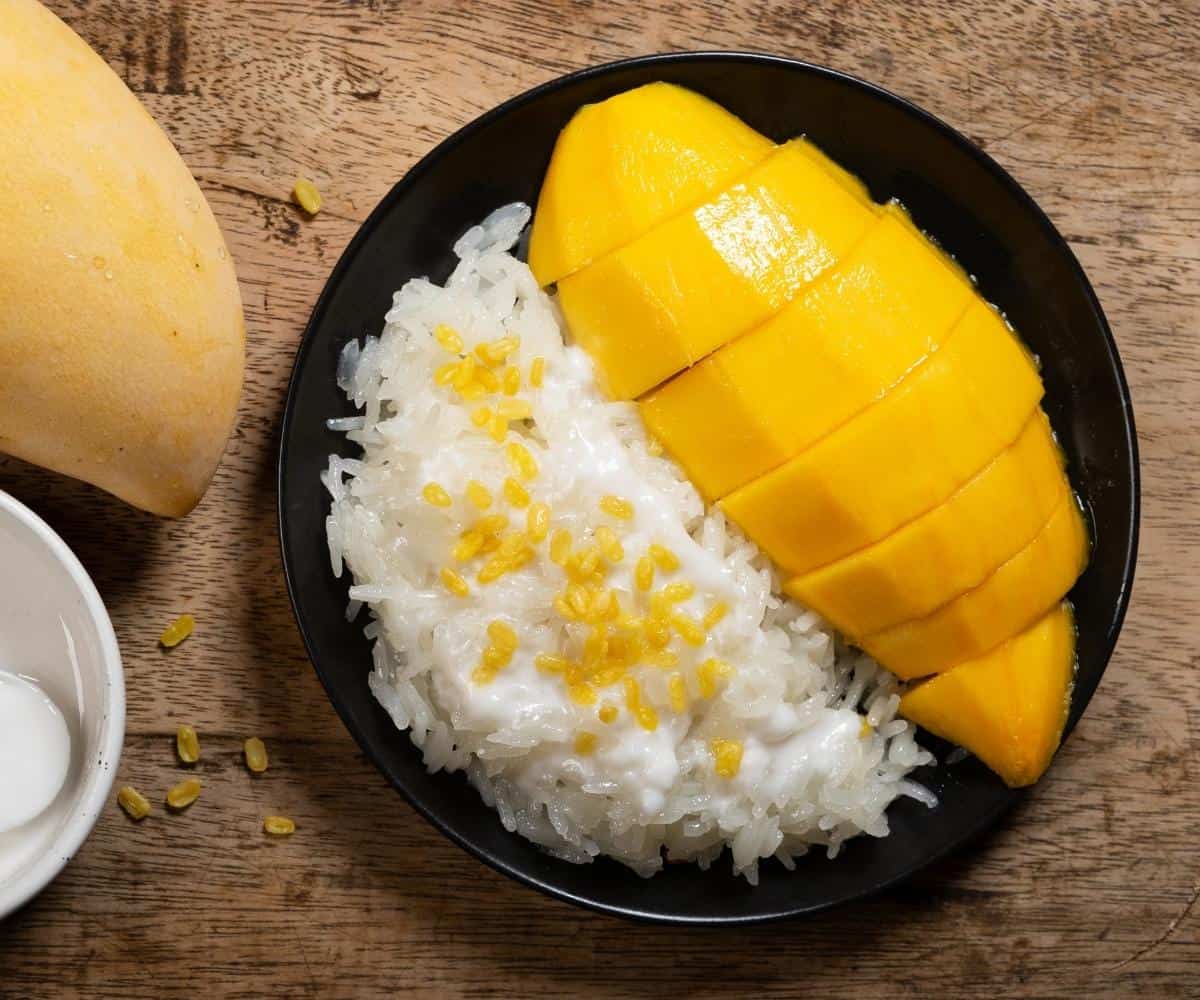

Mango sticky rice is our only dessert of the whole list because it’s the only common dessert that there is in Thai restaurants in North America. Which is sad, because we have so many great Thai desserts.
But, mango sticky rice is almost always great IF the mango is good. That’s the only caveat. So if you are in a time and place where good, sweet mangoes are available, go ahead and order it, but if not…maybe hold off.
The rice part of this dessert is very easy to make tasty, it all hangs in the mango quality.
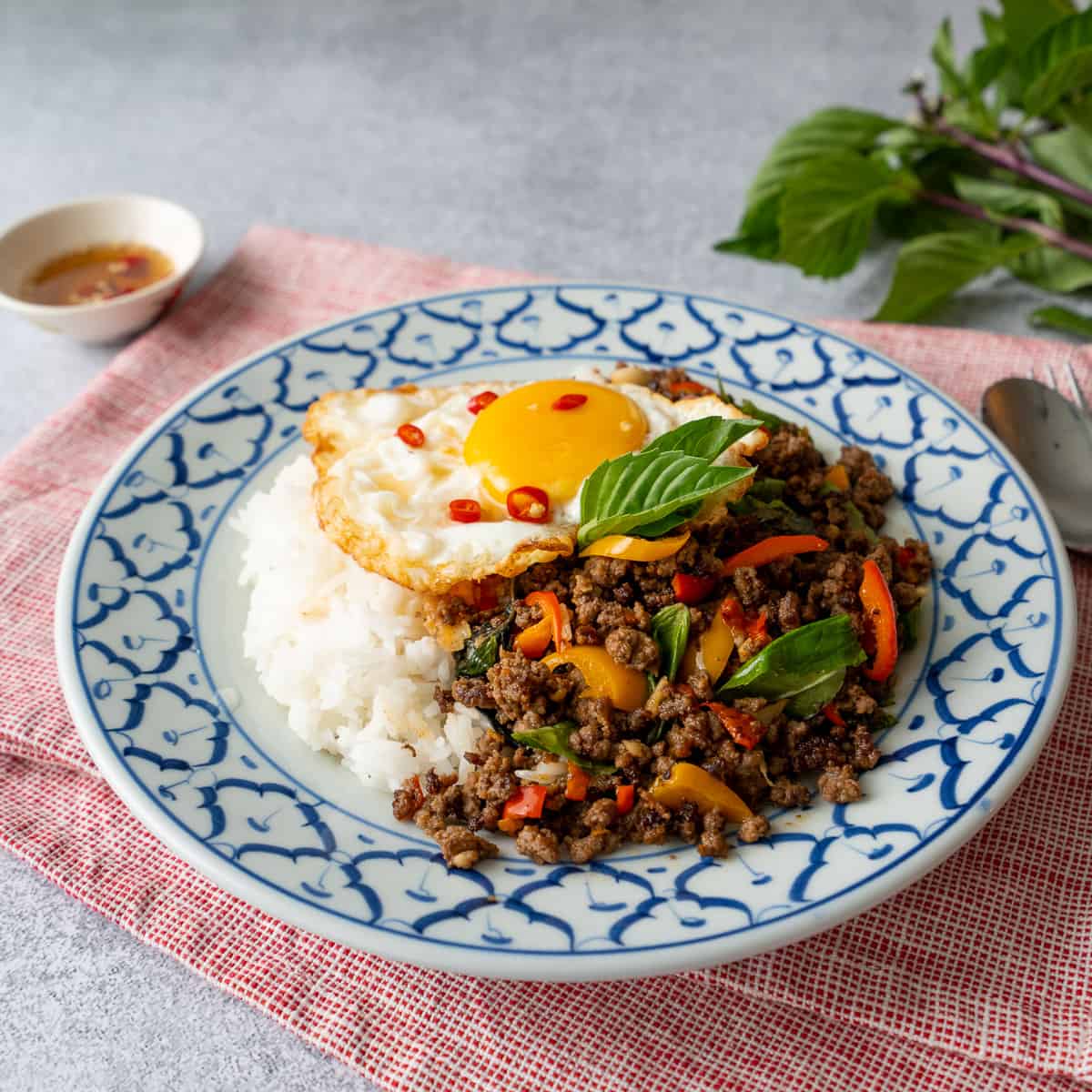

Holy basil stir fry, or a lot of places will list this as a Thai Basil stir fry because holy basil is very hard to find and they will use Thai Basil instead. I feel like most places do a decent job of this, even though it often doesn’t taste like the way it does in Thailand, it tends to manage to be a tasty dish.
The combination of chilies, garlic and basil, whatever kind of basil they end up using, is so good and it does most of the heavy lifting.
15. Laab – A Tier
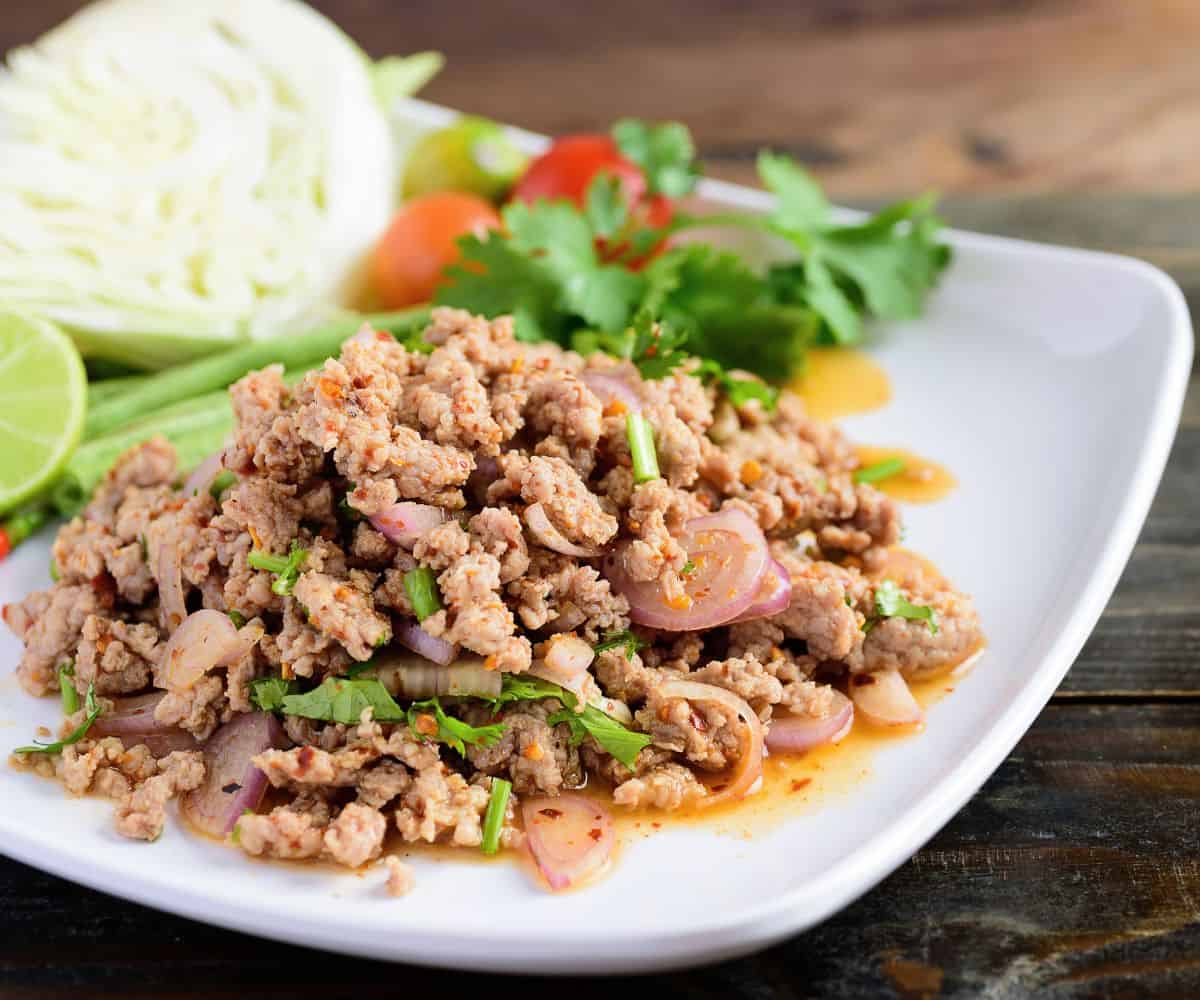

Laab is a northeastern Thai salad made of ground meat and lots of fresh herbs. It’s almost always good because it’s so easy to make. There’s really not that much to it and it’s just hard to screw up!


Pad Thai was the whole reason why I wanted to do a tier list to begin with. I wanted to tell the world that pad thai is most definitely a D – do not order! When I first came to North America I would order pad thai at every place I visited aa a test for whether or not this place is a good place.
I quickly realized that that is a terrible test because most places do a terrible job of it BUT it doesn’t necessarily mean that the rest of the menu is bad. It’s a hard dish to do well, but most places feel that they NEED to offer it on the menu so they make it anyway.
The biggest issue is that it is often FAR. TOO. SWEET. At one Thai restaurant I worked at, seeing how pad thai sauce was made was astounding. A 25-pound bag of sugar poured into a giant pot. Yes, it is a giant pot, but also….it’s 25 pounds of sugar. It turned into a syrup, which explains why the pad thai ends up so sickly sweet and sticky, and definitely NOT the way it is supposed to be.
Not to mention the ketchup, the paprika, and all sorts of cheaper substitutes people make for the real stuff.
It’s also often just…too much noodles. Pad thai is supposed to have a lot of bits in it or what we call “kreuang” The garlic, shallots, dried shrimp, a LOT of bean sprouts, garlic chives, etc. Most of the time here it’s 90% noodles and a pinch of tofu and bean sprouts.
Final Takeaway
I hope you found that enjoyable and perhaps even useful! Again this list is based on my opinion and experience, and judged against my standards, which is may be be different from yours. You’re going to find exceptions to the above, but statistically, I think this is probably reflective of the “average” place 🙂
What would YOUR tier list look like based on places you’ve been to?

